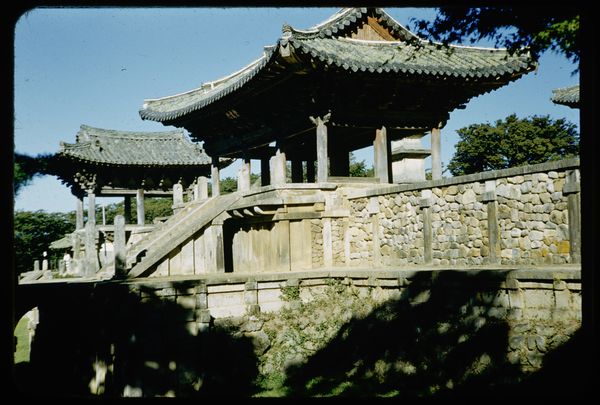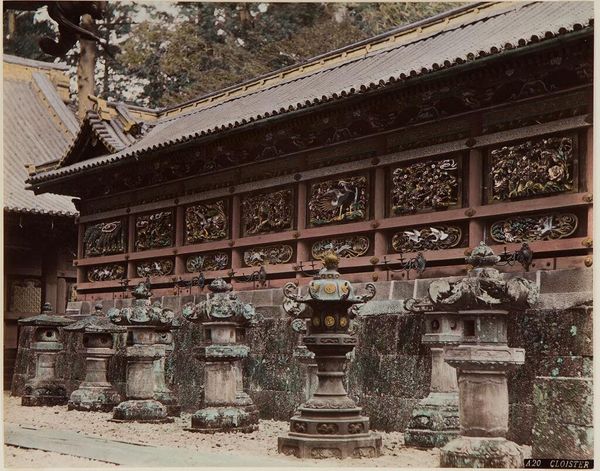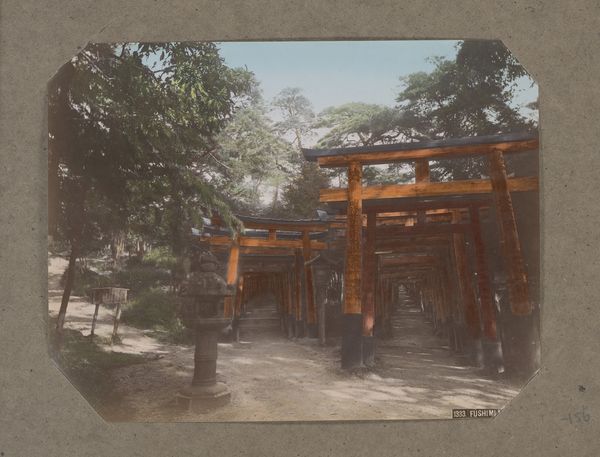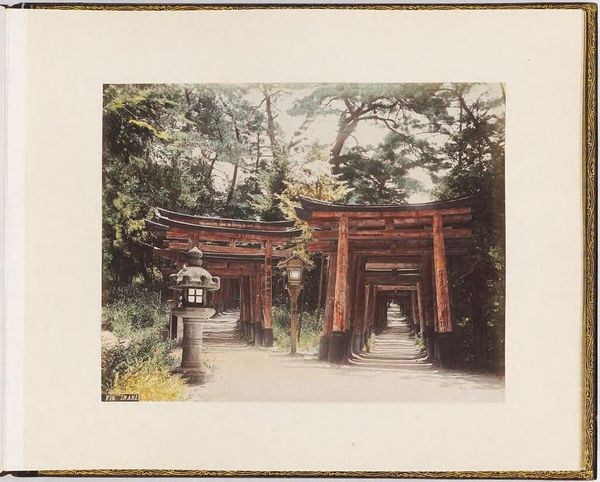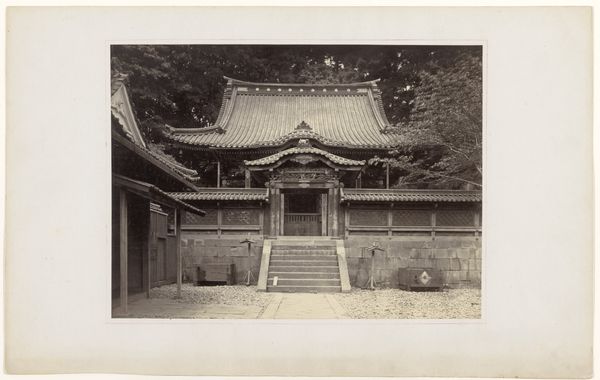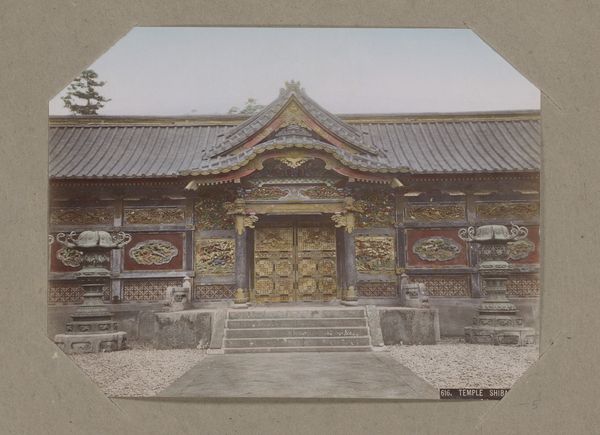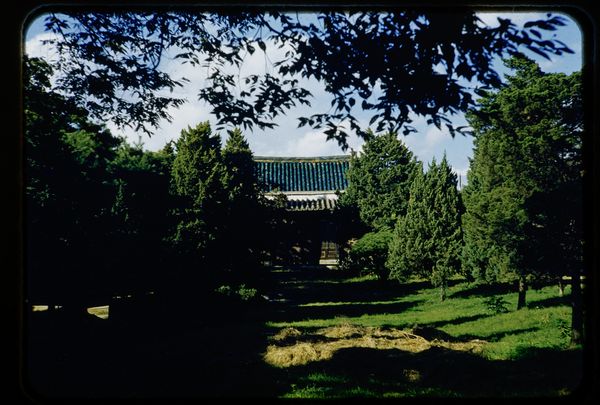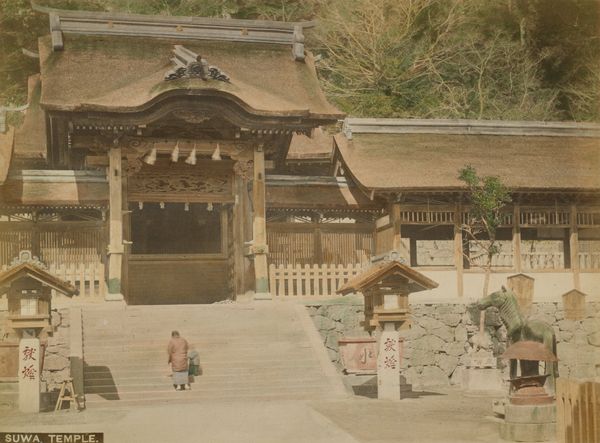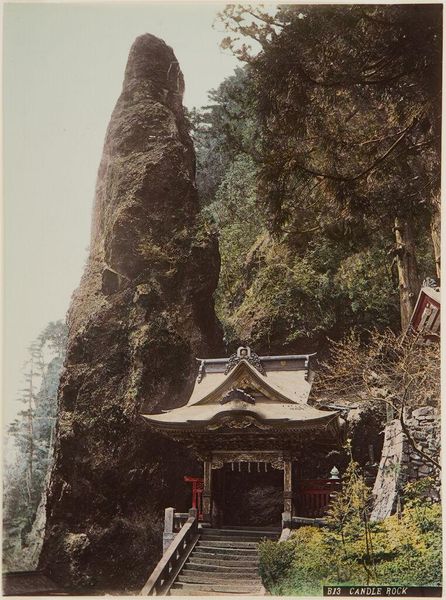
Dimensions: height 5 cm, width 5 cm
Copyright: Rijks Museum: Open Domain
Curator: Look at this photograph. Titled "Het oude keizerlijke zomerpaleis in Seoul," it was taken by David Ketel in 1952 and resides here at the Rijksmuseum. Editor: It's funny—my first impression is tranquility, even though I know 1952 was hardly a peaceful year in that part of the world. There's almost a dreamlike quality. Curator: Yes, Ketel captures a moment of serenity, perhaps consciously. He has a remarkable ability to make the ordinary sublime. As a Dutch artist capturing an East Asian scene, his cultural perspective informs our own. Editor: There's an undeniable tension in that gaze, the colonizer, or traveler, seeking solace within a world that isn't really their own. Curator: Perhaps. Or perhaps he's capturing a universal feeling of peace that transcends cultural boundaries. Ketel frequently utilized the "plein-air" method to highlight the immediate sensorial response of an open-air painting session. And, well, sometimes you’re just painting something because it feels good. Editor: While that might be true, it also dismisses the long legacy of Western artists exoticizing non-Western cultures. Consider, also, that in 1952 the Korean War was raging, which obviously impacted the cultural heritage in the country. There are, sadly, political layers beneath its apparent beauty. Curator: Of course, these landscapes, when viewed through a post-colonial lens, carry unavoidable historical weight, underscoring issues of cultural exchange and power dynamics inherent in the photographer’s perspective. Though to deny the photograph's genuine aesthetic quality due to sociopolitical associations feels like a critical miss. It just feels so meditative and restorative. I just want to breathe that air! Editor: Art never exists in a vacuum, though. It invites us to investigate the complexities behind it and engage in the issues it unintentionally or intentionally addresses. Curator: And art's complexities invite interpretations, sometimes differing ones. It makes experiencing art such a journey, doesn’t it? Editor: Exactly, and if the viewer takes one thing away from these critiques, hopefully they learned something of historical merit.
Comments
No comments
Be the first to comment and join the conversation on the ultimate creative platform.
